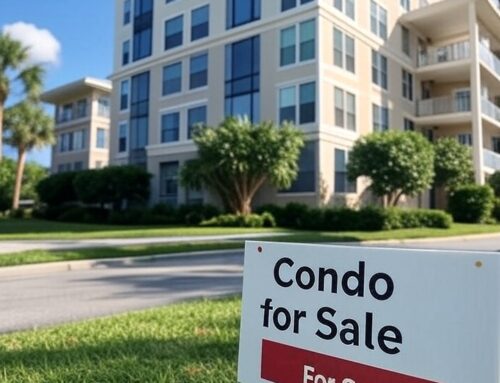May 31, 2025 | Mark Luis Foster
We get questions during network chapter meetings about electrical issues, especially from those who own homes in HOAs that were built in the 1960’s and 1970’s. In these structures, aluminum wiring was the norm, and in today’s world, the insurance industry often takes aim at such structures and the coverages that get provided, or denied. We are thankful for J Becher and Associates, who as a sponsor and presenter, has provided much information to our members in Maple Grove. I’ll be talking with them soon on a future Video podcast interview on HOA Today.
Here’s some information that we pass along in the meantime that may be helpful to those members who have questions about older wiring in HOAs.
[from various sources]
Understanding Electrical Issues in Older HOA Buildings: The Case of Aluminum Wiring
As we navigate the complexities of homeownership, particularly within homeowners associations (HOAs), it’s essential to address the unique challenges presented by older buildings. Many of these properties, especially those constructed in the 1960s and 1970s, face significant electrical issues, primarily due to the prevalence of aluminum wiring. This article delves into the implications of having aluminum wiring, the associated risks, and the impact on insurance coverage for these buildings.
The Rise of Aluminum Wiring
During the 1960s and 1970s, there was a push to use aluminum wiring as a cost-effective alternative to copper. Aluminum was abundant, lightweight, and relatively inexpensive, making it an attractive option for builders. However, as time has passed, we have learned that aluminum wiring poses several safety concerns.
The Dangers of Aluminum Wiring
1. Increased Fire Risk: Aluminum wiring is more prone to overheating than its copper counterpart. The metal expands and contracts with temperature changes, leading to loose connections. These loose connections can cause arcing, which significantly increases the risk of electrical fires.
2. Corrosion Issues: Aluminum wiring is susceptible to oxidation, which can create resistance at connection points. Over time, this resistance can lead to overheating and potential failure of the wiring.
3. Compatibility Problems: Many electrical devices and appliances are designed for copper wiring. Using aluminum wiring can lead to compatibility issues, resulting in malfunctioning or damaged equipment.
Identifying Aluminum Wiring in Older Buildings
For HOA members and property managers, it’s critical to know whether a building uses aluminum wiring. Here are some tell-tale signs:
– Inspection of the Wiring: If you can see exposed wiring, check for the color. Aluminum wiring typically has a silver-gray appearance, while copper wiring is distinctly reddish-brown.
– Check the Year of Construction: Buildings constructed between 1960 and 1972 are most likely to have aluminum wiring, as this was the peak period for its use.
– Look for Specific Labels: Some homes have labels on the electrical panel indicating the type of wiring. If you find a label that mentions “aluminum,” you’ve identified a potential risk.
Insurance Implications
One of the most pressing issues regarding aluminum wiring in HOA buildings is the impact on insurance coverage. Many insurance companies view properties with aluminum wiring as high-risk. As a result, they may impose restrictions or even decline to provide coverage altogether. Here’s what you need to know about the implications for insurance in these older HOA buildings.
Insurance Underwriting and Requirements
1. Higher Premiums: If an insurer is willing to provide coverage for a property with aluminum wiring, homeowners may face significantly higher premiums. The increased risk associated with aluminum wiring translates to higher costs for insurance providers, which they often pass on to homeowners.
2. Mandatory Wiring Updates: Some insurance companies are now requiring that buildings with aluminum wiring undergo electrical upgrades before they will issue or renew a policy. This often includes replacing aluminum wiring with copper wiring or installing specialized connectors designed for aluminum. For example, an HOA might need to budget for an electrical overhaul costing thousands of dollars, which can be a significant financial burden for members.
3. Limited Coverage Options: In some cases, insurers may offer a limited policy that covers only certain types of damage, excluding fire-related incidents. This lack of comprehensive coverage can leave homeowners vulnerable and unprotected in the event of an electrical fire caused by faulty wiring.
Mitigation Strategies for HOAs
For homeowners associations managing older buildings with aluminum wiring, there are several proactive steps that can be taken to mitigate risks and improve insurance prospects:
1. Conduct Regular Inspections: Regularly scheduled electrical inspections can help identify potential hazards early. Engaging a licensed electrician to assess the integrity of the wiring can provide valuable insights and recommendations for upgrades.
2. Upgrading the Electrical System: Although it may seem daunting, upgrading the electrical system to replace aluminum wiring with copper is often the best long-term solution. Consideration should be given to whether the HOA can finance upgrades through reserve funds or special assessments.
3. Install Proper Connectors: If complete replacement is not feasible, installing approved aluminum-to-copper connectors can reduce the risk of overheating and improve safety. These connectors are designed to ensure a secure and stable connection, minimizing the potential for arcing.
4. Educate Residents: Providing educational resources for residents about the risks associated with aluminum wiring can foster a culture of safety within the community. Information sessions or newsletters can help ensure that all members are aware of potential hazards and the steps being taken to address them.
Navigating the complexities of electrical issues in older HOA buildings, particularly those with aluminum wiring, requires a proactive and informed approach. Understanding the risks associated with aluminum wiring, the implications for insurance coverage, and the necessary steps for mitigation can help protect both property values and resident safety.
By prioritizing regular inspections and timely upgrades, HOAs can ensure a safer living environment and maintain their insurability.
The Importance of Community Engagement
Addressing electrical issues in older buildings is not just an administrative task; it requires active engagement from the community. Here are some strategies to enhance community involvement:
1. Hold Informational Meetings: Organize regular meetings where residents can learn about the risks associated with aluminum wiring, the importance of electrical safety, and the HOA’s plans for addressing these issues. This transparency fosters trust and encourages residents to participate in discussions about financial decisions, such as budgeting for upgrades.
2. Form a Safety Committee: Establish a committee tasked with overseeing electrical safety and maintenance in the community. This group can work with licensed electricians and insurance agents to develop a comprehensive plan for upgrading wiring and improving safety standards.
3. Feedback Mechanism: Implement a system for residents to report electrical issues or concerns within their units. This could be an online form or a dedicated email address. Prompt reporting can help the HOA address problems quickly before they escalate into larger safety issues.
Financial Considerations
When planning for upgrades or repairs, HOAs must carefully consider the financial implications. Here are some methods to manage costs effectively:
1. Reserve Funds: Analyze the current reserve funds to determine if there are sufficient resources available for electrical upgrades. If not, consider increasing the reserve fund contributions in future budgets to accommodate necessary repairs.
2. Grants and Financial Assistance: Research potential grants or assistance programs that may be available for upgrading electrical systems. Some local governments or non-profits offer financial aid for safety improvements in older buildings.
3. Phased Upgrades: If the cost of complete wiring replacement is prohibitive, consider a phased approach to upgrades. Prioritize the most critical areas first, gradually addressing the rest of the building over time. This allows for manageable financial planning and minimizes disruption to residents.
Conclusion
The presence of aluminum wiring in older HOA buildings constructed during the 1960s and 1970s presents significant electrical safety challenges. By understanding the risks and implications for insurance, HOAs can take proactive steps to mitigate these issues. Regular inspections, community engagement, and financial planning are vital components of a comprehensive strategy to ensure the safety of residents and protect property values.
Ultimately, an informed and proactive approach can transform potential hazards into opportunities for improvement, fostering a safer and more resilient community.
One Comment
Comments are closed.






Hi — Our association in St. Paul has some townhomes with original FPE circuit panels and is trying to find out if we can mandate that owners replace them since they are a safety hazard or if we can only suggest/recommend replacement. Might be a topic to cover?